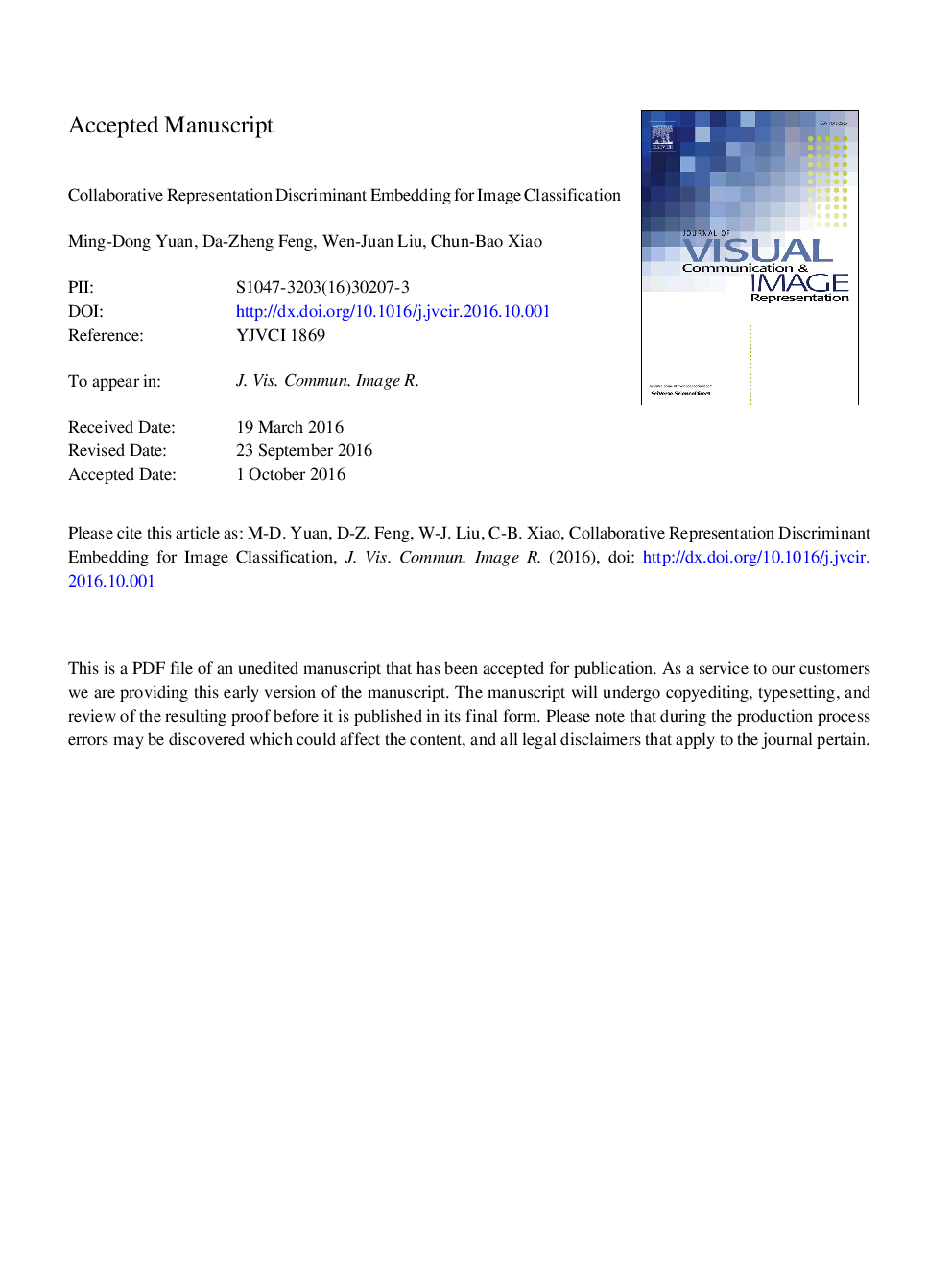| Article ID | Journal | Published Year | Pages | File Type |
|---|---|---|---|---|
| 4969428 | Journal of Visual Communication and Image Representation | 2016 | 41 Pages |
Abstract
In this paper, an effective subspace learning approach, coined collaborative representation discriminant embedding (CRDE), is proposed for image classification. In CRDE, a â2 norm regularized least squares with closed form solution is first applied to pursue the collaborative reconstruction coefficients, which is datum adaptive and computationally more efficient than sparse representation based approaches. Then, the resulted graph is integrated with the modified maximum margin criterion (MMC) to seek the optimal discriminant directions. As a result, the local properties originated in the procedure of collaborative representation and the global discriminative information induced from the modified MMC can be sufficiently exploited. We also show that many popular approaches, such as locality preserving discriminant projections (LPDP), locally linear discriminant embedding (LLDE) and discriminant sparse neighborhood preserving embedding (DSNPE), can be incorporated into our CRDE framework. Experiment results on six databases validate the effectiveness of CRDE compared with nine approaches.
Keywords
Related Topics
Physical Sciences and Engineering
Computer Science
Computer Vision and Pattern Recognition
Authors
Ming-Dong Yuan, Da-Zheng Feng, Wen-Juan Liu, Chun-Bao Xiao,
